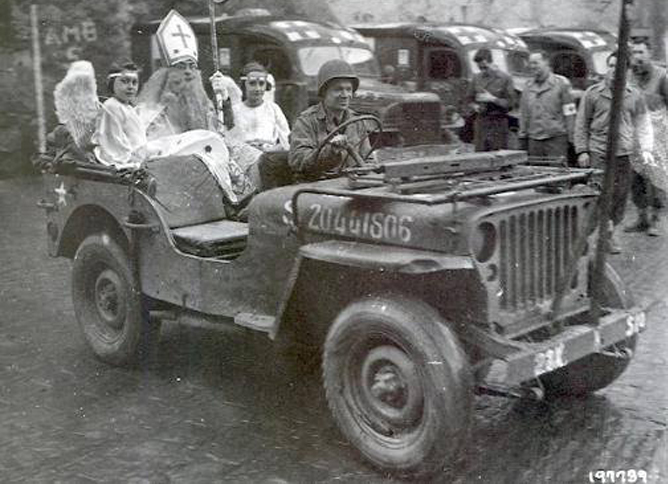Dick Brookins, 94, of Pittsford, NY was known as the American St. Nick during WWII for acts of kindness toward a small town in Luxembourg. Earlier this month, in a ceremony at the Genesee Valley Club, he received Luxembourg’s highest military honor, the Military Medal of Luxembourg.
“This is the highest honor that one can get, and I think Mr. Brookins soundly deserves it,” said Jean-Claude Knebeler, the Honorable Consul General of Luxembourg. “His memory goes on – there is a monument to his name in the city of Villes. They have been repeating the celebrations with a parade, showcasing American military equipment and Santa Claus for the last 75 years – 76 now.”
Brookins was emotional during the ceremony. “There’s not enough words in my vocabulary,” Brookins said. “I am just overwhelmed and happy for my buddies. I love everybody in Luxembourg; they’ve been kind to my family, and we’ve made many friends there, and we feel very welcome.”
Brookins is now a member of a group of recipients that includes Winston Churchill, General Dwight D. Eisenhower, and Charles de Gaulle.
In 1944, Brookins was part of a group of American soldiers who were on leave in Wiltz, Luxembourg, in between battles. Wiltz had just been freed from four years of Nazi occupation. “They’d gather everybody in the town together at 3 o’clock on a Friday afternoon and shoot somebody’s parents in the street and leave them there, so they got the message,” Brookins says.
The soldiers soon learned that the city had no plans to celebrate St. Nicholas Day and decided that they would do what they could for the children. They collected all the candy they had been sent from home and a group of nuns baked cookies. Brookins was chosen to wear the beard and the costume of St. Nick.
At first, he was uncomfortable in the role and the costume. The language barrier made things difficult, too. “I had no idea what I was supposed to do,” Brookins says. “Pretty soon I felt this ain’t too bad. And these kids. Their eyes were coming out of their heads. They couldn’t believe what was going on. And we had no idea what impact this was having and has had for 70 years. It has not abated. The American soldier is an idol.”
In the weeks to come, Brookins and his fellow soldiers would leave to fight in the Battle of the Bulge. “I remember how bad I felt. Ashamed that we were leaving these people behind.”
Wiltz was recaptured by the Nazis and nearly destroyed when the Americans returned to take it back again. Many of the children that Brookins had handed candy to did not survive. The American soldier was still revered in Wiltz because they did come back and set the town free.
Thirty years after the war, the people of Wiltz invited Brookins back to play St. Nicholas again. Since the 70s, he has returned seven times. At the Wiltz celebrations of St. Nicholas Day, the person who dresses as St. Nicholas is still known as the American St. Nick.
WWII Foundation
Watch the trailer from the American St. Nick documentary by the WWII Foundation!
